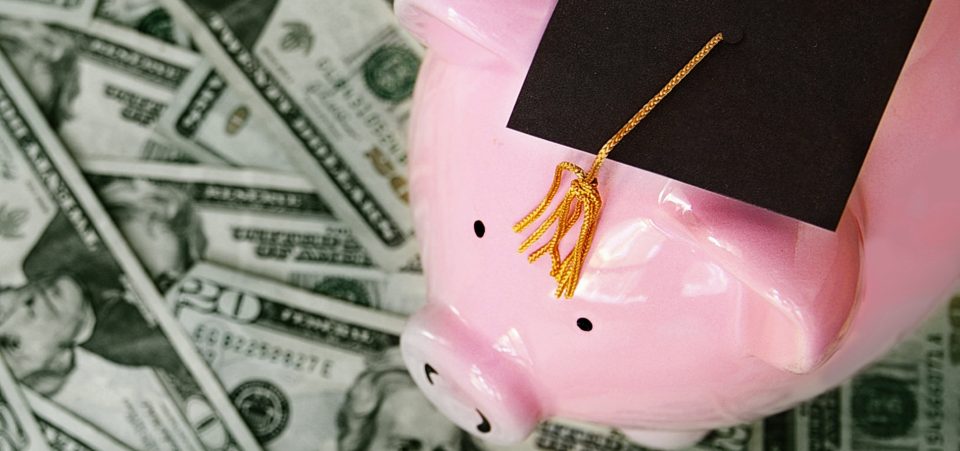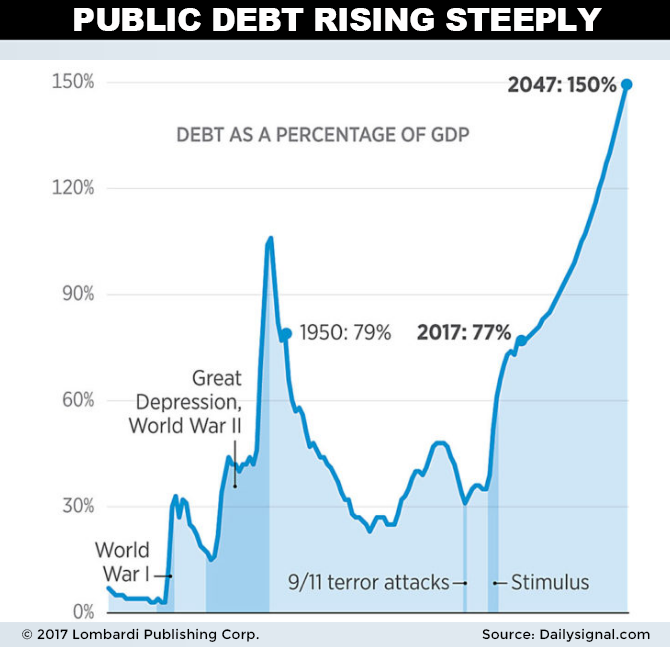The Next Major Economic Threat Could Be Accelerating Deficit Spending from Student Debt Bailout
It wasn’t supposed to be this way. America’s economy is supposed to be robust enough to absorb the tens of thousands of new graduates entering the workforce each year. But it’s not quite working out that way. New figures are suggesting the Student Loan Bubble may be popping, leaving the American taxpayer on the hook. Same as it ever was. America’s next major economic threat could be underway.
The evidence comes via new Treasury Department data showing surging U.S. deficits and outlays. The June 2017 deficit came in at $90.2 billion, versus a surplus of $6.3 billion in June 2016. This smashed the $38.0-billion consensus estimate analysts had forecast. (Source: “US budget deficit rose in June to $90.2 billion,” Financial Post, July 13, 2017.)
But the real kicker: federal outlays have exploded higher. These are all the programs the Federal government spends America’s hard-earned tax dollars on. Outlays increased 33% to $429.0 billion, higher than the $323.0 billion spent one year ago. This was the largest one-month outlay on record. (Source: “The Shocking Reason Why The US Just Spent A Record $429 Billion In One Month,” Zero Hedge, July 13, 2017.)
This out-of-control spending is, in itself, shocking. All things being equal, most people would expect federal outlays to be in the ballpark range with the rate of inflation. This would sound fiscal responsibility in an environment where tax receipts are barely growing. Whether or not you believe robust job growth numbers are exaggerated, high-paying job creation has been weak. Our elected officials have told us so. (Source: “Almost all the US jobs created since 2005 are temporary,” Quartz, December 5, 2016.)
But according to Stone McCarthy, a $54.0-billion outlay overage occurred because the Treasury upped its student loan and housing (to a lesser extent) subsidy cost estimates. Since these loans are calculated on a present value basis, estimates get revised periodically to account for the future net liability of the program. Turns out, the Treasury believes their future liability is greater than once anticipated.
Also Read: 5 Major Economic Threats Facing the U.S. Economy Leading into Summer 2017
What this really means is that taxpayers are about to get shafted…again. The Treasury is preparing for a debt write-off. All those Liberal Arts majors and Bachelor of Humanities scholars who can’t pay off their student debt will be bailed out by Uncle Sam. In the words of “Tyler Durden” (pseudonym) from Zero Hedge, “The student debt bubble has begun to burst, and the Treasury is “provisioning” for it in real time, with all US taxpayers once again on the hook.” (Source: Zero Hedge, op cit.)
The Federal Deficit Keeps Growing
The fiscal storm brewing in Washington keeps deteriorating. Total debt-to-GDP is near 107, a post World War II high. Reliance on debt borrowed from the credit markets (as opposed to internal programs like Social Security), is also at highs. The difference between what Uncle Sam collects in revenues and what it spends is expected to rise sharply with no end in sight. Social Security costs are skyrocketing. For all the challenges which lie ahead, inept Washington politicians can’t even agree on a budget or needed spending cuts. The trajectory of future debt liabilities looks grim.
Without a change of course, even the notoriously optimistic Congressional Budget Office (CBO) expects aggregate debt to double by 2047. This doesn’t take into account any extra stimulus spending the government will require during the next market meltdown. You don’t need a PhD in Economics to know that something will need to give.
Either taxes will increase dramatically or new ones will be introduced (i.e. Value Added Tax). Perhaps social security or health care spending will get pared back dramatically. Perhaps high inflation will afflict America under the huge debt burdens or credit rating downgrades, which should eventually transpire.
Whatever the case may be, the coming student loan debt write-off will grow the federal deficit in the near term. If we take an educated guess and assume 35% of student loan debt will get written off, that leaves taxpayers on the hook for $500.0 billion in bad loans. For a nation in perpetual red ink, that hurts. It says nothing of the terrible precedent it sends to other factions of society, who themselves may be looking for future bailouts.
Ultimately, the student loan bubble is but a small slice of the major economic threat that lies ahead. That is, an unstoppable wave of debt which threatens the pillars of a strong U.S. dollar and cherished credit rating. There’s only so much tax revenue which can be squeezed from Joe Public. Once that threshold is reached, the Treasury will see declining returns.
The biggest public threat is a declining standard of living through reduced social programs and less disposable income. Throw in the potential for higher inflation, and a trifecta concern awaits. While most people view this as a long-term problem, insidious effects are filtering through today.







